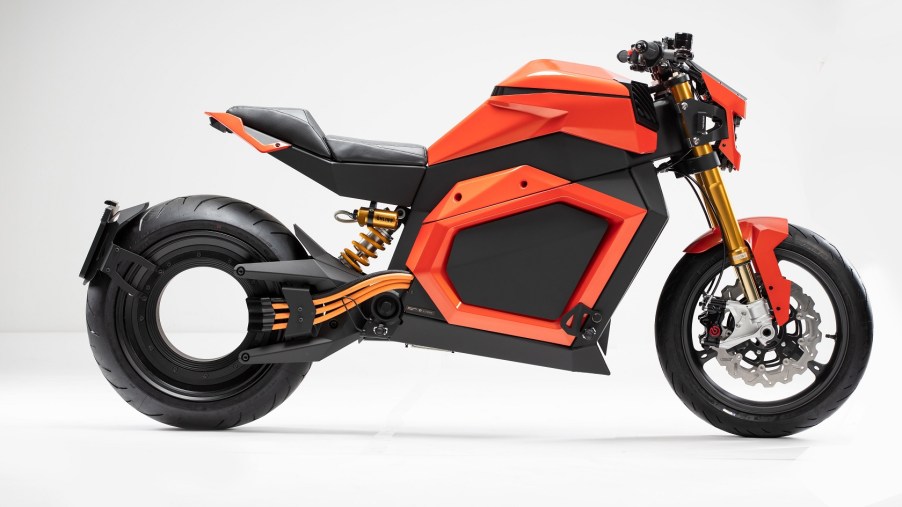
The Verge TS Is an Electric Motorcycle With Only One Brake
That electric motorcycles are fast is not in doubt. The Harley-Davidson LiveWire, for instance, can out-drag a Tesla Model 3 Performance. And Zero Motorcycle’s FX is one of the fastest dual-sports on the market. But electric bikes can also match ICE ones in terms of intriguing design choices. True, no electric motorcycle right now has 4 wheels or a car engine. But Kawasaki is developing one with a manual transmission. And now a Finnish startup, Verge Motorcycles, is about to release one with only one brake. But that’s because the Verge TS doesn’t need two.
What is the Verge TS?
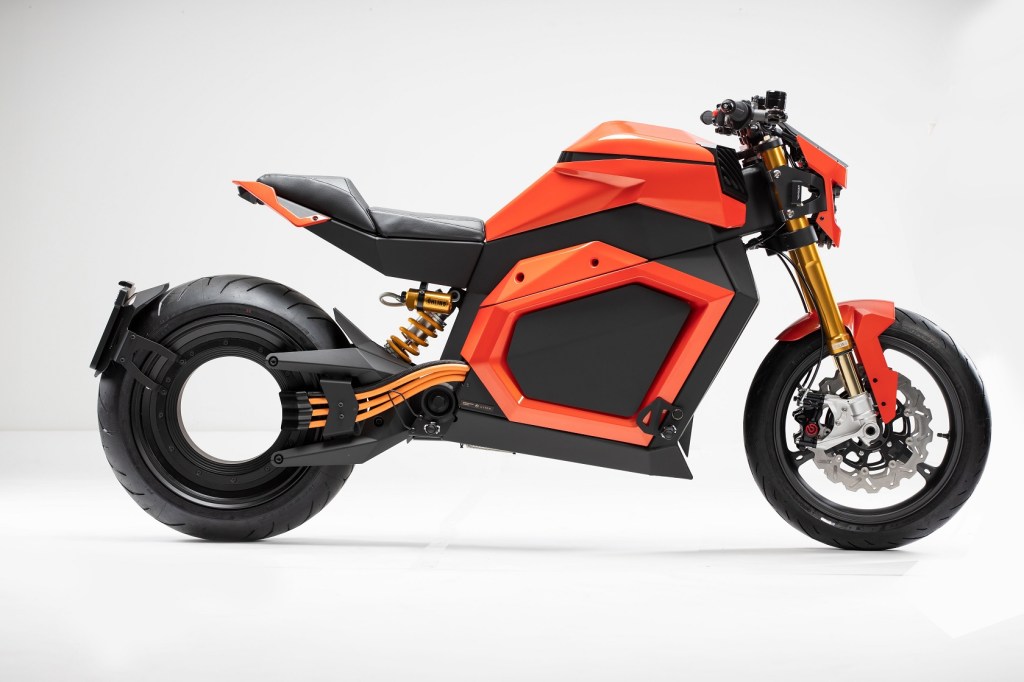
Originally, Cycle World reports, the Verge TS was shown as the RMK E2. However, in between then and now, the electric motorcycle’s undergone a name change as it nears production. Though at least one thing hasn’t changed: its hubless rear motor. That’s something really only seen on concept bikes so far.
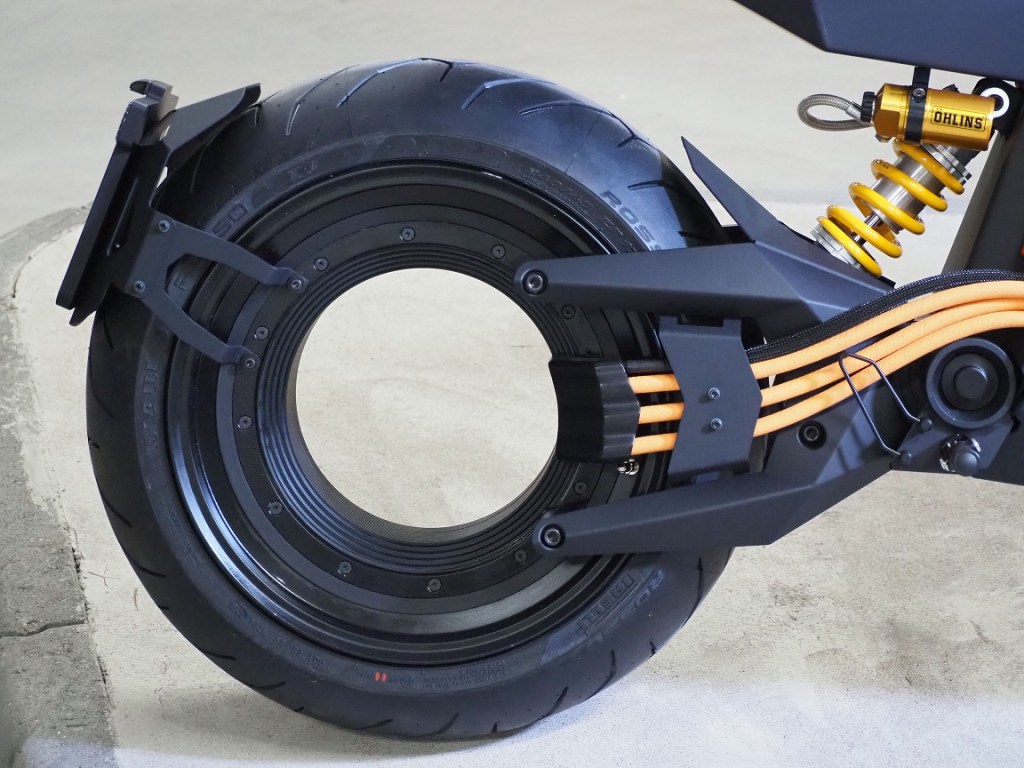
Normally, an electric motorcycle would send power from its motor to the rear wheel via a chain or belt drive. That’s how Zero Motorcycles, Harley-Davidson, Energica, and KTM do it. However, the Verge TS’ electric motor is integrated into the rear wheel itself. So, instead of a wheel and tire spinning, only the tire spins. Thus, no chain or belt needed. However, that’s only the first big change the Verge TS brings to the electric bike.
Electric motors can easily switch rotation direction. That’s how regenerative brakes work: the motor runs in reverse to recover energy and slow the EV down. In many cases, this regen system brakes just as well, if not better, than the conventional brakes. That’s why the Verge TS only has a front brake: it doesn’t really need a rear one.
There’s also no rear brake pedal. Instead, because it doesn’t need a clutch, the hand levers control braking. And with no shifter, the rider’s feet can be placed forward, for comfort, or reverse, for a sportier riding position. Indeed, the Verge TS has 2 sets of footpegs, for this reason, RideApart reports.
Other specs and features
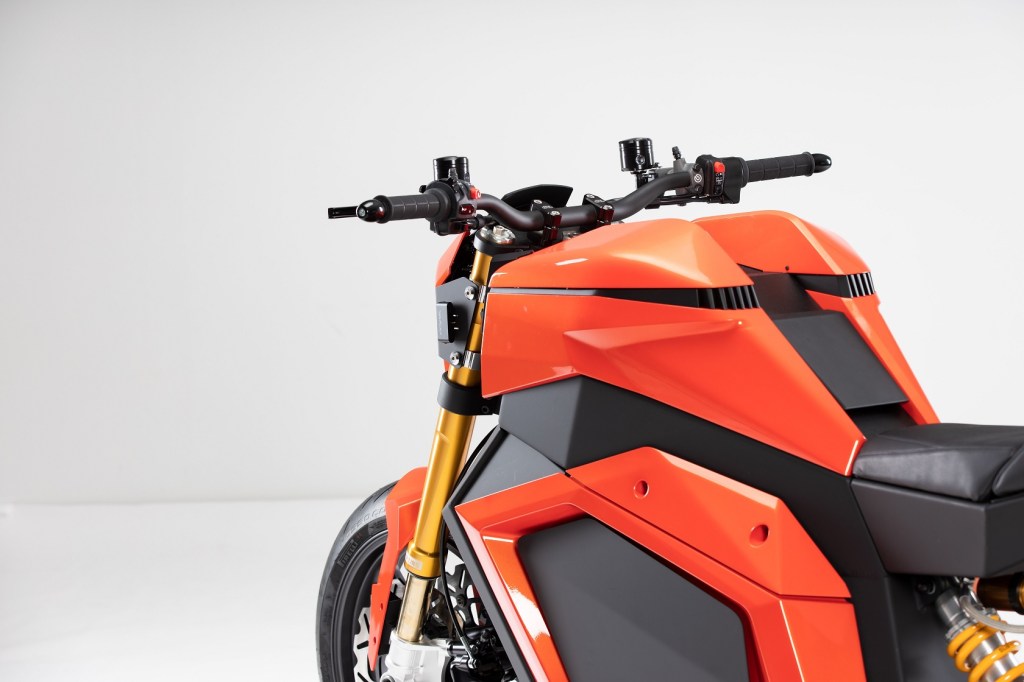
In addition to the hubless motor, the Verge TS has Ohlins suspension and Brembo front dual discs brakes. The tires are Pirelli, and Verge claims the rear tire is no more difficult to remove than on a conventional motorcycle.
Verge hasn’t released the TS’ official weight; Autoblog reports the firm claims it’s “lower than you think.” It does have an aluminum frame, presumably to mitigate the battery pack’s weight, which is often a concern for EVs. The pack’s capacity also hasn’t been revealed. However, Verge claims it’s good for 186 miles of city riding, and 124 miles on the highway. The TS is compatible with DC fast chargers, though, which knock recharge time from 4 hours to 50 minutes.
Finally, there are the motor specs. Verge reports the TS puts out 107 hp and 737 lb-ft, which is good for a 111-mph top speed and a 0-60 time under 4 seconds. That torque figure requires a bit of explanation.
When, for example, GM claimed the electric Hummer makes 1000 lb-ft, the automaker was reporting wheel torque. That’s the motor torque multiplied through the drivetrain’s gears and differentials. However, because the Verge TS doesn’t have any additional gearing, its motor really is putting out 737 lb-ft. True, Cycle World reports a typical 1000cc bike may make more wheel torque. But it’s still impressive that Verge’s motor can put out that much torque on its own.
Pricing and availability
As of this writing, the Verge TS isn’t yet production-ready. The company is offering refundable pre-orders for the equivalent of $2160, though. When it does reach production, it will sell for the equivalent of $27,000.
It’s not clear when, or if, the Verge TS will be available in the US. However, because electric motorcycles aren’t subject to crash tests like electric cars, it likely wouldn’t too difficult a process.
The Verge TS vs. the electric motorcycle competition
$27,000 isn’t an insignificant amount of money to pay for a motorcycle, electric or not. However, the Verge TS does, in some areas, compare favorably to its electric motorcycle competition.

For instance, the Harley-Davidson LiveWire puts out slightly more horsepower, Cycle World reports. And in terms of acceleration, it can deliver sub-3-second 0-60 times. However, it’s about $2800 more expensive. And, both in the EPA’s and Cycle World’s testing, it has noticeably less range.
The Zero SR/F is significantly cheaper than either the LiveWire or TS, with the Standard model starting at $19,495. It’s also more powerful than either. However, even with the optional Power Tank and a fast charger, it will charge slower than the Verge or Harley. And Cycle World reports the SR/F has less real-world range than the LiveWire.
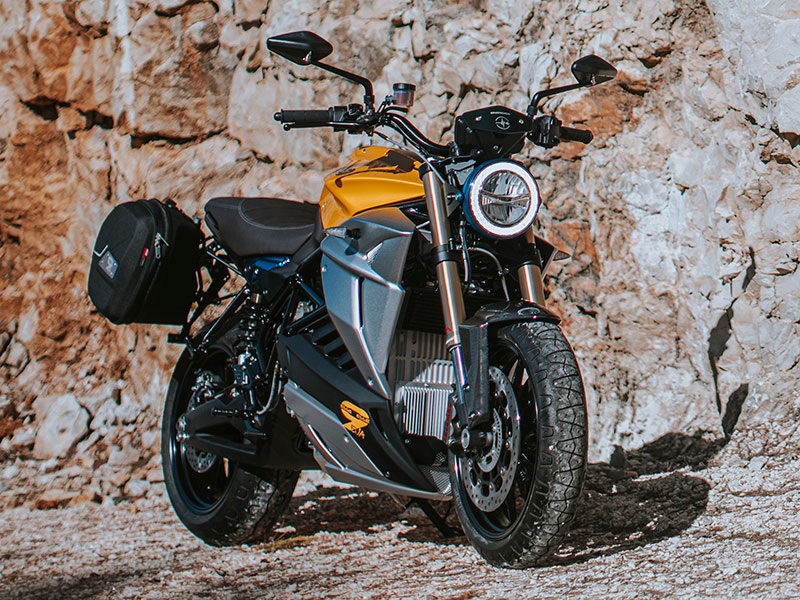
In terms of range and performance, the Energica EssEsse9+ is fairly close to the Verge TS. It doesn’t have a hubless motor. But it does make 109 hp and have a claimed city range of 250 miles. It’s also cheaper than the TS, with a $21,350 starting price.
But here’s hoping the Verge TS makes it here. If only for the motor’s shock factor.
Follow more updates from MotorBiscuit on our Facebook page.


